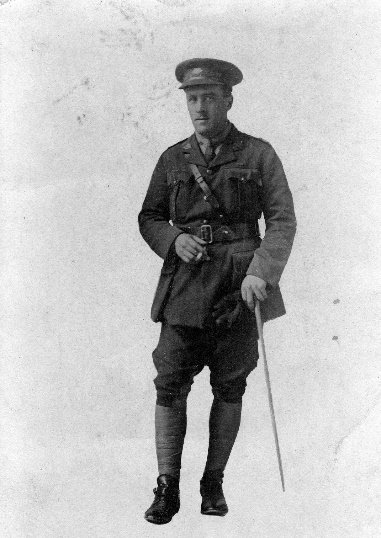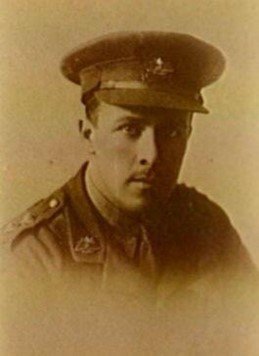
Stanley COLLESS
Eyes blue, Hair dark, Complexion dark
Stanley Colless’ Family - Penrith
Stanley was a member of a well-known extended family in the Penrith Nepean areas of New South Wales including an uncle, Alfred Colless, who owned the local newspaper. Stanley himself was the youngest child of nine born to parents Elizabeth (nee Jordan) and Henry Colless. His father had farmed for some years on the Murrumbidgee River but then moved to Penrith and worked with the New South Wales Railways. A shunting accident resulted in the loss of a leg and eventually led to him being invalided out on a pension.
Children of Elizabeth & Henry Colless
- Amy Colless (1873-1958)
- Ernest Colless (1874-1922)
- George Colless (1876-1953)
- Edwin Colless (1879-1949)
- Claude Colless (1882-1960)
- Pearle Colless (1884-1938)
- Ella Colless (b. 1887)
- Lillian Colless (1890 – 1891)
- Stanley Colless (1892-1918)
Born at Penrith on 19th November 1892, Stanley was educated at the Penrith Superior Public School. After leaving school he was engaged as a wool classer by Messrs A. W. Davis and Co at Liverpool, where he remained until he enlisted on June 19th, 1915.
Colless was a keen sportsman and played cricket and football. He was also a member of a rifle club and won a number of prizes in shooting competitions.
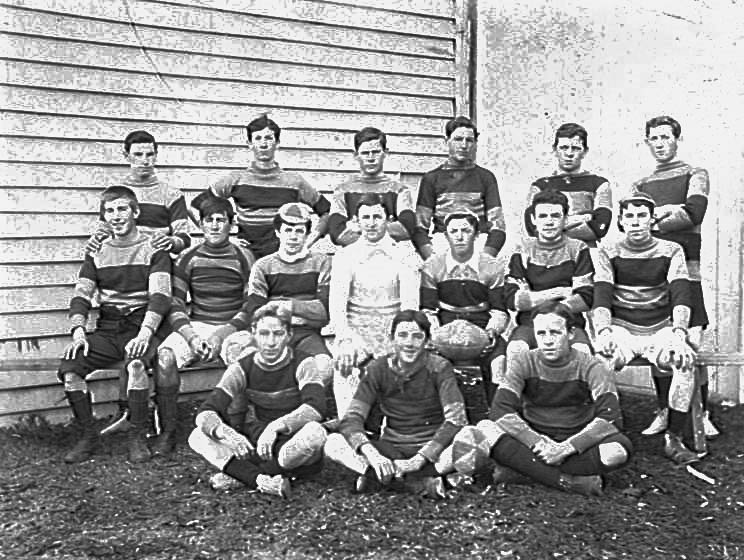
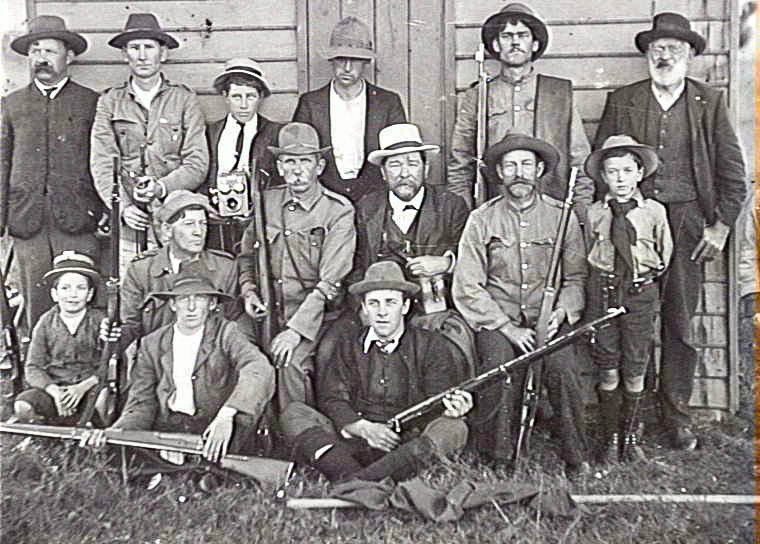
Stan's brother, George, enlisted on 22 August 1915 with the Canadian Expeditionary Force. George had emigrated to Canada after serving with Australian forces in the Boer War. Stan had the opportunity to meet up with George in England on occasions when both were stationed there during the war.
Off to war
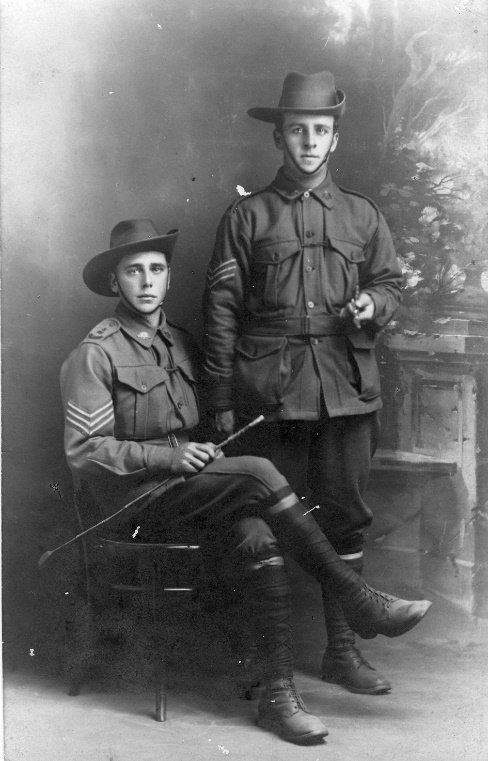
Acting Sergeant Stanley Colless sailed from Australia on 30th September 1915 with the 9th Reinforcements, 3rd Battalion arriving in Suez a month later. There is a fascinating letter written by Stan to his family at home that was published in the local newspaper. It described the colour and drama as they were farewelled from the wharf in Sydney, the month-long sea voyage and finally the delights of discovering the sights and history of Egypt – truly an adventure for a young Australian soldier seeing the world for the first time. This quite detailed letter can be read below.
On arrival, Stan would have been involved in training (including in the use of the Lewis gun, a light machine gun) and in defensive actions in Egypt before he was transferred to the 55th Battalion in February 1916 as part of the post-Gallipoli reorganisation of the AIF. At this time, Stan’s rank was formalised with promotions to corporal and immediately to lance sergeant.
Fromelles – Distinguished Conduct Medal
In June, the 55th Battalion embarked for France and, according to the Australian War Memorial website:
…the battalion entered the frontline trenches for the first time on 12 July and fought its first major battle at Fromelles a week later. The battle was a disaster, resulting in heavy casualties across the division. Although in reserve, the 55th was quickly committed to the attack and eventually played a critical role, forming the rearguard for the 14th Brigade´s withdrawal.
It was this rearguard action at Fromelles that led to Sergeant Stan Colless being awarded the Distinguished Conduct Medal for conspicuous gallantry. In C.E.W Bean’s First World War Official Histories, Bean cites notes by Captain Norman Gibbins, CO B Company, reporting on the reinforcements from the 55th Battalion and the five Lewis Guns under Sergeant Stan Colless – a man who Captain Gibbins singled out for specific mention:
"Sergeant Colless doing good work- my officers also of course.”
Captain Gibbins himself was killed during the Battle of Fromelles.

Colless’s actions were described in the formal gazettal of the honour and copied as follows in a letter to Stan’s parents from Major J. M. Lean, the officer in charge, Base Operations in Melbourne:
"His Majesty the King has been graciously pleased to approve of the award of the Distinguished Conduct Medal to the undermentioned non-commissioned officer for acts of gallantry and devotion to duty in the field
No 2808, Sergeant Stanley Colless.
For conspicuous gallantry during operations. He kept the teams of two guns working in the enemy's second line, from which he was finally driven out by overwhelming bombing parties. By his fine example, he kept the team steady, and covered the retreat of a company, thus saving many casualties."
The local paper The Nepean Times, 21 September 1918, page 2 noted that Stan sent this medal home to his parents soon after he received it and that it became one of their treasured possessions. A 1916 article published (see copy below) around the time of the awarding of the DCM noted that Stan had been recently promoted to lieutenant and commented on his true Australian valour and that:
“his many friends at Penrith…..are not really surprised that one of the grit and resolution of Stan Colless had gained such deserved distinction.”
Lewis Gun Instruction – England
In the month following the Battle of Fromelles, Stan was promoted to Lieutenant and later was assigned as an instructor of the Lewis Gun in England. He also served for a time as adjutant for the 14th Training Battalion in England.
It was during these times that he had the chance to catch up with his brother, George.
After a year in these roles, he relinquished his appointments and returned to active service on the Western Front in October 1917.
Western Front – Belgium, France – Military Cross
As a raider, Lieutenant Colless was known to be very keen and daring and he certainly had the admiration of his men. For instance, Private Joseph Carter wrote home to say:
“Stan Colless will do for me to face the Boches; he gives them their issue quick and lively.”
While many of Stan’s exploits were never recorded, there are some reports of his actions including a raid led by him on 3rd March 1918 – described by Private Carter who was in it with him as ‘a lively time’. The following news article describes the raid in detail:
Raid by Australians. Penrith Boy Mentioned.
Mr Gordon Gilmour, special correspondent of the Australian and New Zealand Press Association in a dispatch last week from the Western Front dealing with two raids carried out at Warneton, France, by the Australians, makes particular reference regarding a Penrith boy (an officer) and in the last issue of the "Sydney Sun" a similar story is published from the pen of that paper's representative, and styles the officer as a "woolclasser" from Sydney. Taking the two articles together it would appear that the officer referred to is Lieut. Stan Colless, son of Mr and Mrs H Colless, of Penrith, who was recently decorated with the D.C.M. Mr Gilmour's despatch is as follows
Hardly had the guns settled down to sleep, when the Germans retaliated in a small way further north. Our guns came down heavily within a few seconds but the Boches succeeded in approaching within speaking distance of an advance post where there were about 20 men, who energetically bombed them back.
I have a vivid first hand description of the previous night's raid by New South Wales men, still farther north in the same sector, simultaneous with the first raid against Warneton. A young Penrith officer, who earned the Distinguished Conduct Medal as a sergeant at Fromelles, chose a score of boys from a unit, the whole of which volunteered. They stole out and effectively dealt with three pill boxes, which they found the Germans gamely defending, one gun crew actually firing a machine-gun atop the pillbox. The officer worked round behind and shot two with his revolver. Meanwhile the lads approaching from the front accounted for the others, tackling two with their fists, finally killing them.
One prisoner was taken. He was brought in weeping, but the Australians gave him cocoa and toast.
The most exciting incident of the raid occurred when returning with the real work completed. The raiders met eight Germans approaching from the flank. A German rushed up and dealt the officer a blow in the face, knocking out his teeth. The officer shot him with his revolver in the stomach, while the boys bombed the remainder in three seconds. The German barrage prevented them from returning to the original point, but the officer, knowing No-man's land as well as his own home garden, promptly led his party safely out.
A youngster named "Curly from Coolamon" is believed to have scored the greatest amount of scalps. The officer explained that himself, Curly, and two others among the raiders had lost brothers in the war and were taking every opportunity of revenge. The party is elated at their exploit and declare they will follow their officer anywhere.”
Due to his “splendid leadership and control, his coolness under fire, and the example he set for his men by his total disregard of personal danger” during this raid, Lieutenant Stanley Colless, D.C.M. was awarded the Military Cross. The formal recommendation for the honour is reproduced below.
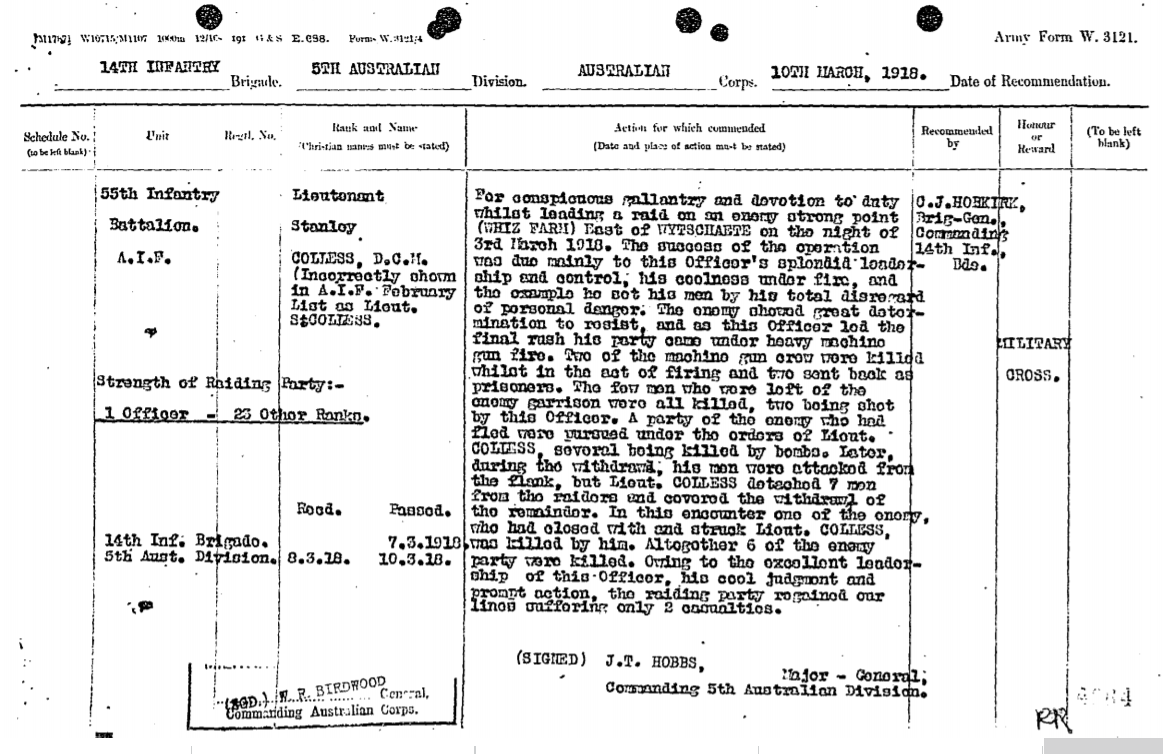
Death of Stanley Colless, aged 25
Lieutenant Stanley Colless, D.C.M., M.C. was killed in action on 1 September 1918 to the right of Mont St Quentin during the battle for Peronne in France.
Red Cross reports from fellow soldiers confirm that he was killed by machine gun fire and buried in the nearby cemetery. His comrades also attested to his character as follows:
He had a great name in the Battn and was a very game officer; he came from N.S.W.
I often heard Lieut. Colless say he played football somewhere Sydney way. He was very popular with the men. He had two decorations; I think these were the D.S.O. and M.C.
Mr Colless held the M.C. and D.C.M. and was quite one of our most popular officers.
He was an excellent officer, quite one of the best and was the most popular officer in the Battn.
A fine strong built young fellow. Very popular in the Company.

Other Family who served
In addition to Stan’s brother, George Colless who served with the Canadian forces there were at least three first cousins who were killed in World War 1, one of them as a result of wounds received during the Battle of Fromelles.
1194 Sgt Frederic Joscelyn COLLESS
32nd Battalion – died in France, 1916, aged 37
- Born 1879 to Joseph and Mary COLLESS in Bourke, NSW
- Travelling salesman resident in WA, married to Anna ONN with three children
- Served in Boer War as Sgt-Major
- Wounded during Battle of Fromelles, taken prisoner of war
- Died 23 July 1916 of sepsis after being wounded in both legs
- Buried at Lille Southern Cemetery, France
4698 Pte Ernest William HALL
20th Battalion - died in France, 1916, aged 33
- Born 1883 to Lavinia (nee COLLESS) and Alfred HALL in Warren, NSW
- Fireman resident in Auburn, NSW, unmarried
- Killed in action 15 November 1916 in Fleurs, France
- Buried at Warlencourt British Cemetery, France
18744 Gunner Frank Lancelot SEALE
7th Field Artillery Brigade – died in Belgium, 1917, aged 33
- Born 1884 to Maria (nee COLLESS) and John SEALE in Maitland, NSW
- Electrical engineer resident in Beecroft, NSW
- Killed in action 11 September 1917 in Dickebusch, Belgium
- Buried at The Huts Cemetery, Dickebusch, Belgium
There were numerous other cousins (further removed) who served, some of whom gave their lives in service to their country. This long list also included first cousin, Nurse Stella COLLESS (1883-1976) who served in both World War I and II.
Remembering Stan
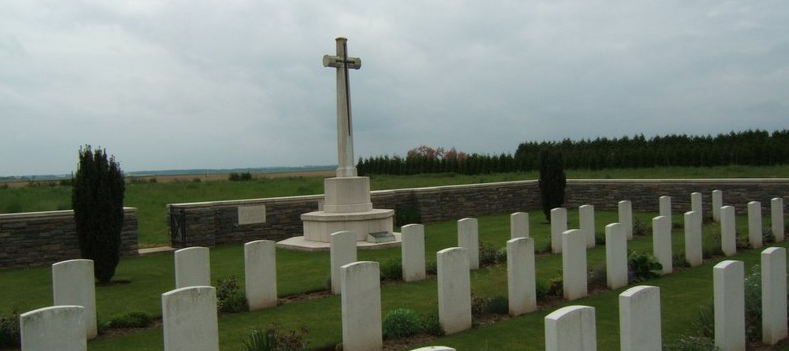
Stanley Colless is buried in the Herbecourt British Cemetery with the personal inscription on his headstone reading, Perfect peace with loved ones far away. In Jesu’s keeping he is safe.
He is also commemorated on:
- Australian War Memorial, Panel 160 – Canberra, Australian Capital Territory
- Penrith City Memory Park and Roll of Honour – Penrith City, New South Wales
- St Stephen's Uniting Church Roll of Honour 1914-18 – Sydney, New South Wales.
- Penrith Superior Public School First World War Honor Roll – Penrith, New South Wales
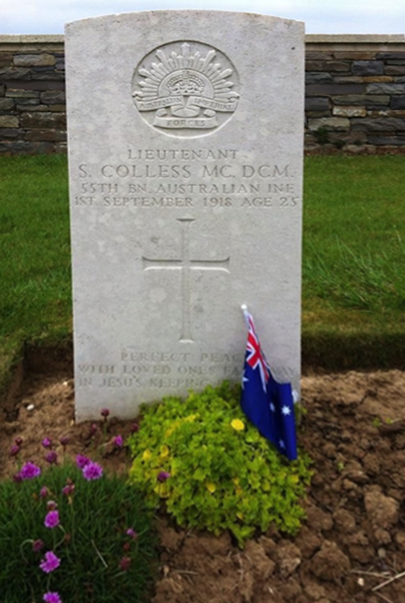
And the family still remember him today. Mark Adams, a second cousin of Stan’s, responded to his nephew’s request for information about their families’ role in the Australian military noting that 133 of their extended family served in World War 1. Of those, 39 were killed – including Stan - and countless others wounded. Mark described how his daughter had recently visited Stanley’s grave in France. As a mark of respect, she placed a flag upon his grave and wept, not just for Stan, but for the other 66,000 Australians lost in the Great War.
Letter from Stan dated 11 November 1915 and published in the local paper
Source Soldier's Interesting Letter (1916, January 15). Nepean Times (Penrith, NSW : 1882 - 1962), p. 8. Retrieved September 23, 2020, from http://nla.gov.au/nla.news-article86144579
Nepean Times (Penrith, NSW 1882 - 1962), Saturday 15 January 1916, page 8
Soldier's Interesting Letter
We have received the following letter from Sergeant Stan Colless (son of Mr and Mrs H Colless, of North Street, Penrith), under date November 11th., 1915:
I will now try and describe our trip since we left dear old Sydney.
We left Liverpool at 5.40 a.m., and arrived in Sydney about an hour afterwards. Notwithstanding the early hour, there was a huge crowd to greet us. We formed up in the railway square, and after a tedious delay of about an hour, moved off, over 1800 strong. Friends, sweethearts, wives, fathers and mothers helped to swell the ranks — all carrying something — girls shouldering their boys' rifle, others helping to carry our packs. I can assure you I was very thankful to get mine carried. On the other hand, one could see some of the boys carrying babies. Our bugler (a mere boy) marched at the head of the column with a wee mite in his arms that slept the whole way, totally oblivious of all the noise and bustle. After marching through crowds of cheering people we arrived at the gates, where came the saddest part of all — the last ''Good-bye.''
We eventually got aboard, and almost immediately moved away from the wharf. My last impressions of the wharf baffles description. Imagine the whole stretch of landing place jambed chock full of people, the majority of whom held streamers connected with the ship. As the ship glided away, the multitude of colors looked gorgeous. For all that, it was very sad, although the throng were cheering and waving, they were very sad eyed. I can truthfully say I have never been so moved before in my life.
After moving away from the wharf we anchored up the harbour for a few hours, and about 5 o'clock in the evening we started on our journey. The first two days the weather and the sea was beautiful, and the men had a chance to settle down. On the third day we ran into bad weather, and all across the Bight we experienced high seas — a nasty head wind. On one occasion we shipped a heavy sea, which swamped some of the troop decks and played havoc with the mens' kits and rifles. The majority of the men suffered from sea-sickness, and some were real bad. We called into Albany for two hours to put off a man suffering from pneumonia. We did not land but anchored in the sound, so had no chance to go ashore.
After rounding the coast of Australia we ran into smooth seas and fine weather, which remained with us until the end of the trip. Taking things on the whole the trip was very enjoyable, and I think most of the men enjoyed it. We did not get much drill, as space was rather limited. The evenings were mostly whiled away with concerts and boxing competitions. The trip took us exactly thirty days, and I was not sorry to get my feet on terra firma again.
The greater part of the trip, from a sight-seeing point of view, was quite uneventful. We passed very few ships until in the vicinity of the Red Sea. The interest started as we approached the Straits of Babel-Mandeb. The approach is a series of huge rocks, twelve in all, on one of which is a big lighthouse. The view is an impressive one, and at night, which was fortunately moonlight, it looked splendid. From there on we were practically in sight of land all the way. The country is all barren — not the slightest sign of vegetation anywhere. The heat through the Red sea was very trying, but the nights were tolerable, and, being able to sleep on deck, I was very comfortable.
Well, we eventually arrived at Suez on Saturday, October 29th., and anchored in the gulf until Sunday morning, when, at an early hour, we went alongside the wharf. We disembarked about 12 o'clock, marched straight into the train, which runs alongside the wharf, started on our journey from Suez at 12.30 p.m.
The journey by train was full of interest, and the many diversions on the way made the eight-hour journey quite tolerable. As the trains in this quarter do not by any means exceed the speed limit, one has plenty of time for seeing the sights. On our approaching any of the native villages swarms of kiddies could be seen waiting with outstretched hands all the while calling for baksheesh (money).
The train runs quite close to the canal for a considerable distance, and a good view of this wonderful waterway is seen. We passed through one of the principal parts of the Nile irrigation scheme, and one is struck with its importance; country that a few years ago was desert is now fertile soil, growing sugar cane. One sees dairy cattle on beautiful maize clover, and vegetables in abundance. Whilst here and there one sees dairy cattle on beautiful green pastures. Truly, a wonderful transformation.
Passing on, one comes to Ismaila, which owns several decent houses and a fair-sized garrison of Indian troops, some of whom were on duty at the railway station, and, as we passed through, presented arms in perfect order. They look very hardy and fit for anything.
Passing on, the next town of importance is Zagazig, where we stopped for water (for the engine), and the men bought fruit and drinks from the natives, who were in hundreds selling their wares. It was now 5.30 p.m., and as we had had no food since morning, we were feeling hungry.
A few hours later we arrived at Zeitoun, about eight miles from Cairo, where we alighted. After forming up we had a march of about one mile and arrived at Heliopolis camp about 8.45 p.m., tired, hungry, and dirty. The camp is a huge stretch of sand, with huts for the men on the principle of Liverpool. We were put into huts for the first three days, but are now in tents and are fairly comfortable. The sandy ground makes it hard to keep clean, but you can buy grass-mats from the natives for a floor covering, and make things very snug.
The weather is very hot in the daytime and cold at night. The flies are very troublesome, but I suppose we will soon get used to the conditions. All I am thankful for is that I did not have to put in a summer here.
I have been into Cairo twice since I arrived, and as it was at night time on each occasion I could not have much of a look round. The hours of work in camp are longer than Liverpool, but although harder is much more interesting. Reveille is 6 a.m., drill from 7 till 9, breakfast, then fall in again at 10, work till 12.30, dinner, fall in 3 o'clock, and drill till 5.30 p.m. From 6 o'clock till 9.30 all the men not on duty can go into Cairo; lights out at 10.15. Electric trams run within five minutes of the camp right into Cairo in half an hour, the fare being one piastre, so you see we are quite handy to the city.
The camp is well equipped as regards conveniences, plenty of showers, barbers, tailors, and everything one can wish for. If you are not satisfied with the camp, Heliopolis boasts of several first class shops, where one can obtain all wants.
I have been on a couple of trips — one to the Pyramids, and one including the city of Old Babylon Mosque of Amir, Dead City, Garden of Pharoah's Daughter, Tombs of the Marmaduke's. Both trips were brimful of interest, and under an excellent guide thoroughly enjoyed them.
We started away from camp on our trip to the City of Babylon on Saturday afternoon, went into Cairo by special tram cars, where we found gharries (two horse landies) waiting for us. Getting into them we drove through the best residential part of Cairo and saw some magnificent houses — all the houses being built of stone, which makes them look beautifully white and clean.
Passing along we got out of the town; after about three-quarters of an hour's driving we arrived at the Mosque of Amir. This building is a Mahommedan Temple, 900 years old; in it are 365 marble pillars — one for each day in the year, composed of Greek, Roman, and Corinthian architecture. One of them is supposed to have been sent by Mahomet from Mecca, over 4000 miles away. The woodwork architecture is in a wonderful state of preservation, and is closely guarded by followers of the creed. In one corner of the Mosque is the tomb of Sheikh Abdulla, the builder of the mosque, this is also of marble and beautifully carved.
One pillar, (the one supposed to have been sent from Mecca) is placed on the spot where Mahomet called all religious denominations together to pray for the rise of the Nile. The reason for this is that each year the Nile overflows in August. One year it did not, so Mahomet asked for prayers, and whilst they were praying the Nile rose and rose and the country was saved. To commemorate this occasion Mahomet had the pillar sent from Mecca. The peculiarity of this stone is that it has a grain in it that is for all the world like a whip lash.
In another part of the mosque one finds the Cebal or well for ceremonial washings. This well is supposed to be connected with Mecca.
Leaving there we re-entered our Gharry, and after a short drive arrived at the City of Old Babylon — the entrance to which is an old Roman gate thousands of years old. Passing through some of the quaint byways of the city, we come to the Orthodox Church. This Church was built by the Baptics or true Egyptians. These people are Christians, but are different from all other Christians.
This Church is of wonderful interest, and was rebuilt 900 years ago. It is mostly comprised of marble, and one of the marvels is how the huge blocks of stone were placed in position, and so solidly, as to remain intact all these years. In the centre of the church is a stone stairway, which one descends the Crypt. In here the Holy Family took rest for a week during their flight from Palestine to Egypt.
Going further into the city we came to the Jewish Synagogue built 2000 years ago. Although somewhat modernised, there are still many of the old pieces of architecture. Enclosed in a sort of tomb is the stone on which Moses prayed for the cessation of the plague. The principal thing of interest in this synagogue is the ''Tara,'' an Hebrew Bible. This five Books of Moses are printed in Hebrew on gazelle skin. An exquisite piece of work, and, needless to say, the envy of all museums in the world, and was the work of Ben Ezra, the great Jew of that period, and is 2000 years old. To this day, it is used every Jewish Sunday at the service, and is in a wonderful state of preservation.
Leaving this interesting city, we again entered our gharries and drove down to the Nile. The first glimpse of this river shows a noble waterway with beautiful residences dotted on its banks. Coupled with this the stately palms make a truly eastern scene. Entering a native boat we crossed the river and entered a beautiful shady garden planted with vines, flowers and palms. This is the garden of Pharoah's Daughter. Walking through we came to the wall up to which the Nile runs, and looking over, you see the place where Moses was found, or supposed to have been found, in the bull-rushes. In another corner of the garden is the Nilometer. This was built by the early Romans, and is in use to-day, people coming from near and far to watch the rise and fall of the Nile recorded.
Recrossing the Nile and picking up the waiting gharries we set out for the Dead City. This is the city of the dead, and covers 10 square miles. It consists of tombs of the Marmadukes. This gorgeous Mausoleum holds the tombs of eight members of the Royal Family. The floors are covered with magnificent Persian carpets, and the tombs are of white marble, elaborately carved and picked out with gold. Visitors have to wear slippers when entering. The builder of this wonderful work was Ibraim Pasha, who died in 1848. This man was also the Builder of Cairo, and the instigator of the Nile Irrigation Scheme.
This finished our first day's trip which took in all about five hours, every minute of which was enjoyed. The price, too, was extremely reasonable, as the whole trip only cost four shillings.
Our second trip was to the Pyramids and Sphinx. Leaving Cairo we had a splendid drive along a motorised road for about nine miles, hugging the Nile for a good part of the way. Arriving at the halting place we found donkeys, camels and guides galore waiting to take us round. We elected to walk, and soon reached the base of the giant Pyramid — the height of which is 471ft. At one of the corners are kind of stepping stones, where one can mount to the top. This is truly a marvellous structure, and the huge blocks of stone with which it is built makes one wonder how the ancient Egyptian put them in place. Inside this Pyramid is the tomb of Cheops — the builder of the Pyramid. In all there are nine Pyramids, three large, and six small.
Passing on we came to the Sphinx. This wonderful work is still wonderfully preserved, although the stone is very weather-worn. Walking on we come to the tomb of the Sphinx. These are made of marble and alabaster. The marble came from Assouan. Some of the blocks are 14ft long by 8ft broad, and the smallest of them is about 6ft. How these were placed in position will for ever remain a mystery. Continuing on, we pass several old tombs, beautifully sculptured — the principal one being that of Rameses. This finished our trip to what is truly called one of the seven wonders of the world.
The Fromelles Association would love to hear from you

Contacts
(Contact: royce@fromelles.info or geoffrey@fromelles.info).
(Contact: army.uwc@defence.gov.au or phone 1800 019 090).
Donations
If you are able, please contribute to the upkeep of this resource.
(Contact: bill@fromelles.info ).

